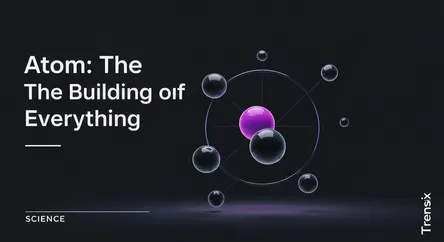Science
Atom: The Building Block of Everything

An essential guide to the atom, the fundamental unit of matter. Understand its structure, its relevance in modern science, and its impact on daily life.
What is it?
An atom is the smallest unit of ordinary matter that forms a chemical element. Every solid, liquid, gas, and plasma is composed of neutral or ionized atoms. Atoms are incredibly small, typically around 100 picometers across. They consist of a central nucleus, containing protons and neutrons, which is surrounded by a cloud of electrons. The number of protons determines the element (e.g., an atom with six protons is carbon). While once thought to be indivisible, we now know atoms are made of these subatomic particles, which are governed by the laws of quantum mechanics.
Why is it trending?
While a fundamental concept, the atom remains a trending topic due to constant advancements in science and technology. Fields like nanotechnology directly manipulate individual atoms to create new materials and devices. In energy, research into nuclear fusion, which involves combining atoms, promises a clean power source. Furthermore, breakthroughs in quantum computing rely on controlling the quantum states of single atoms. Ongoing discoveries at particle accelerators like the LHC continue to refine our understanding of atomic structure and the fundamental forces that hold them together.
How does it affect people?
Everything you see and touch is made of atoms, so they affect every aspect of human life. The chemical reactions between atoms power our bodies and create the materials we use daily. Atomic principles are the basis for countless technologies, from the silicon chips in your smartphone to the medical imaging techniques like MRI that save lives. Understanding atoms allows us to generate nuclear energy, create new medicines, and develop stronger, lighter materials for everything from airplanes to sporting equipment. They are, quite literally, the foundation of our physical world.